Estimated reading time: 12 minutes
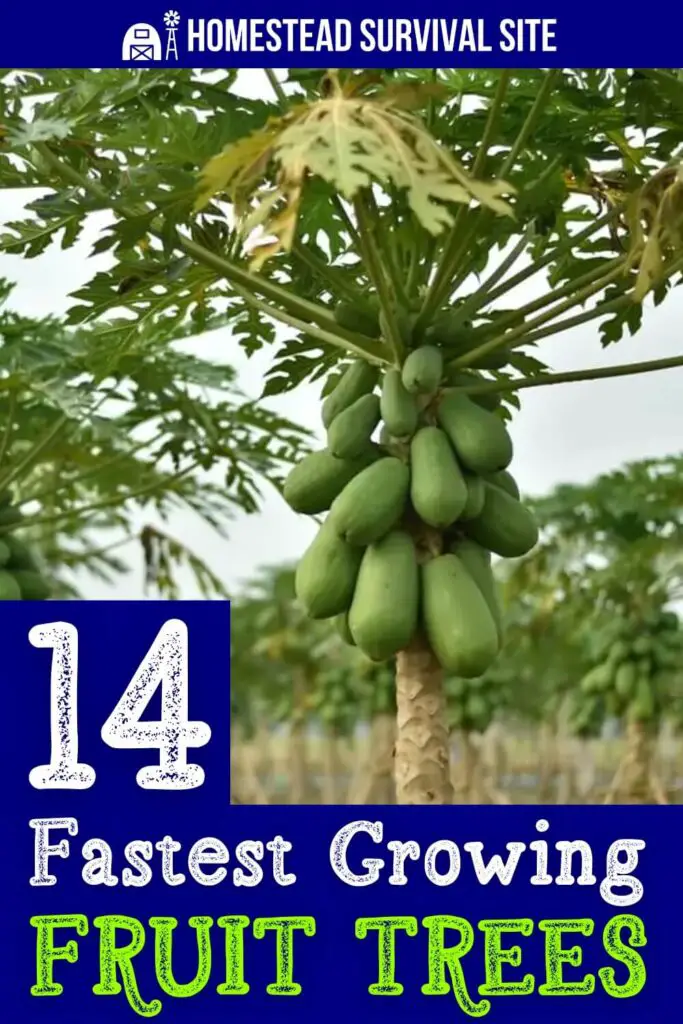
There’s nothing quite like the experience of going out into your own backyard and picking fresh fruit right off the tree. But fruit trees can be discouraging to many gardeners who like to see a quick turnaround in yield.
Many fruit trees can take years to start bearing fruit, and represent a significant time and space investment in any garden. Some citrus trees can take between 6 and 10 years before you see the first piece of fruit!
For those of us that like to see a quick turnaround from our gardens but still don’t want to give up the idea of fresh fruit, there are several types of fruit trees that will bear fruit fairly quickly. Figs, mulberries, peaches, and even lemons can all give you a successful fruit harvest within the first year they are planted when well cared for.
If you're interested in growing your own fruit, here are 14 trees that will be fruit in just a few years.
Apricots

If you live anywhere in hardiness zones 6-9, apricots may be a great choice for your fast-fruiting garden. They typically produce fruit after about 3 years and can produce fruit for 20 to 25 years after that. Although it may not bear fruit, the tree itself can live as an ornamental for up to 150 years.
Most varieties of apricots are self-fruitful, so you only need one tree to produce fruit successfully. Once a mature tree blooms, it is typically between 100 and 120 days for the fruit to be harvestable.
Growing Tips:
- Climate: Ideal for USDA zones 6–9. Protect from late spring frosts that can damage blossoms.
- Soil: Prefers well-draining loamy soil. Avoid heavy clay or overly wet soil.
- Sunlight: Full sun is essential for fruit development.
- Watering: Moderate, consistent watering—especially during dry periods and fruit development.
- Pruning: Prune annually in late winter to improve airflow and encourage fruiting wood.
Banana
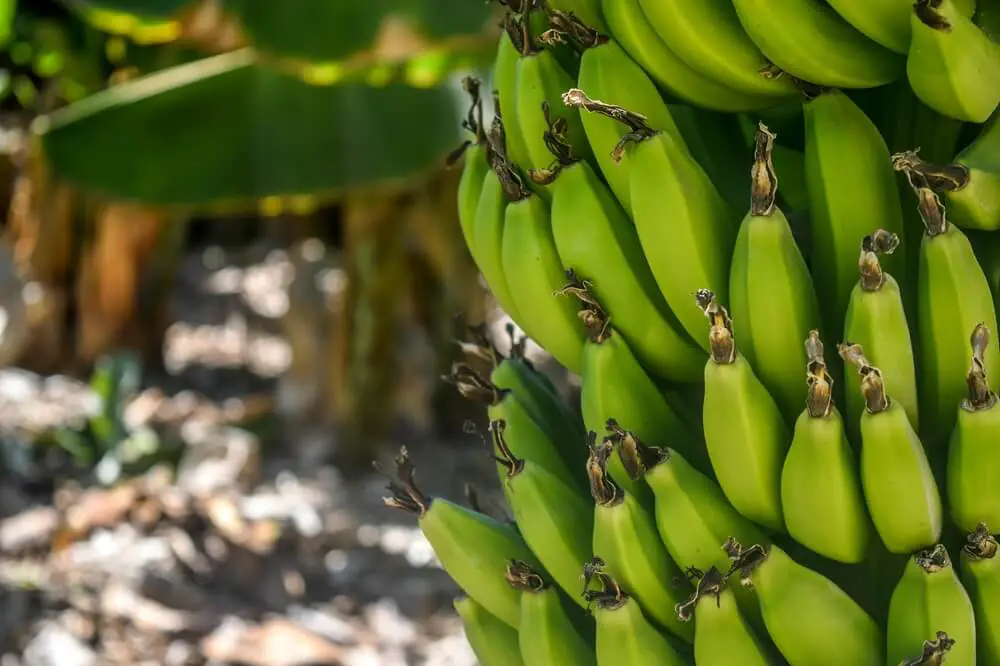
Banana plants are among the fastest fruit producers, with some varieties yielding fruit within 10–15 months. They add a tropical feel to any garden. Here's some info on how to grow bananas.
Growing Tips:
- Climate: Best suited for USDA zones 9–11. In cooler areas, grow in containers and move indoors during cold weather.
- Soil: Needs rich, well-draining soil with a pH between 5.5 and 7.0.
- Sunlight: Full sun is necessary for optimal growth.
- Watering: Keep soil consistently moist but not waterlogged.
- Fertilization: Feed monthly with a high-potassium fertilizer to support fruit development.
Black Cherries
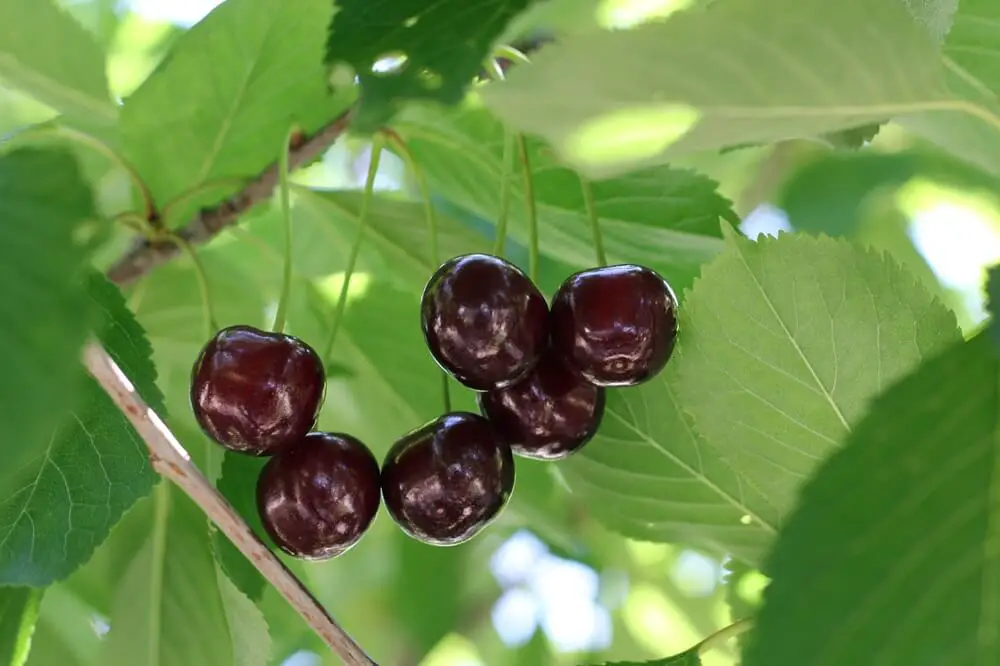
Although a little tarter than their cousin, the sweet cherry, black cherry trees only take 2-3 years to produce after being planted. Sweet cherry trees can take 5-7 years to fully mature and produce fruit.
Since they are on the tarter side, black cherries are great to use in jams and liquors. They also grow fairly quickly, reaching up to 20 feet in just a few years.
The key to getting a quick first harvest from many fruit trees is to purchase grafted stock. Grafting is a technique where a budding stem of one tree is inserted into the rootstock (roots and some portion of the trunk) of another tree. The budding stem then becomes the top part of the tree (called the scion) and the rootstock becomes the lower portion of the tree.
This technique is frequently used with varieties of trees that are difficult to propagate from seed. The result is a hardier plant that will start bearing fruit one to two years earlier than its brethren grown from seed.
Growing Tips:
- Climate: Grows well in USDA zones 3–9.
- Soil: Thrives in deep, moist, well-drained soil with a slightly acidic pH.
- Sunlight: Needs full sun for optimal growth and fruit production.
- Watering: Deep watering once a week during dry spells.
- Pruning: Light pruning in early spring to shape and promote healthy branching.
Figs
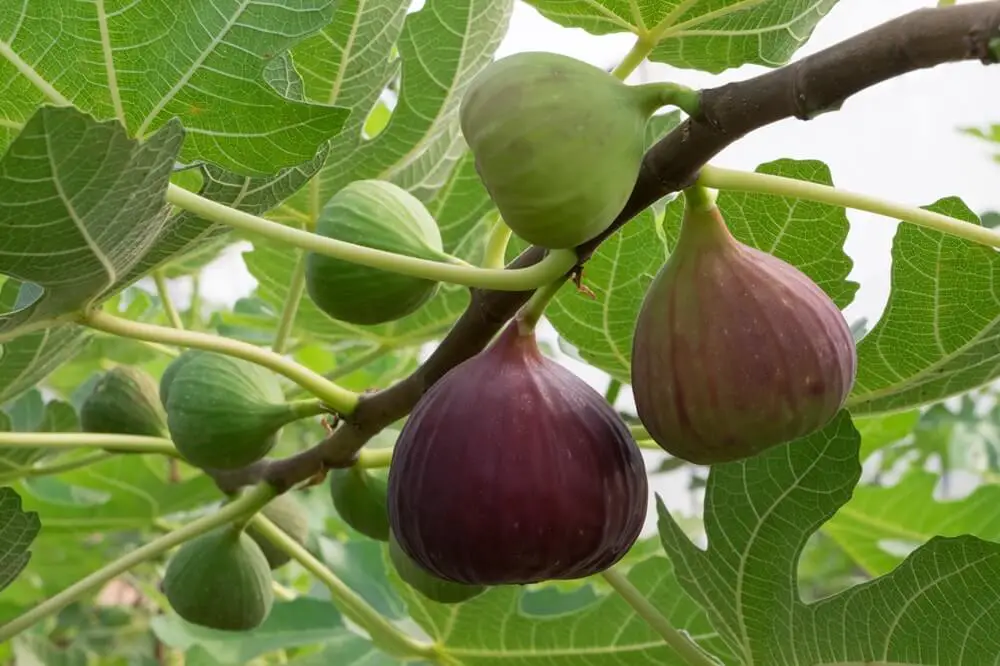
If you live in a Mediterranean climate, fig trees will give you fruit in 1-2 years after planting. Notoriously easy to grow, fig trees can also be grown in pots if you live in a climate with colder winters.
Left to their own devices, fig trees can grow up to 30 feet tall within about 5 years, but several gardeners attest to seeing trees as little as one-foot tall bearing fruit. Due to their popularity, there are many types of fig varieties available, so be sure to choose one that is especially adapted for your climate zone.
Growing Tips:
- Climate: Best for USDA zones 7–10. Can be grown in containers in colder zones and overwintered indoors.
- Soil: Well-drained soil rich in organic matter.
- Sunlight: Requires full sun (6–8 hours daily).
- Watering: Water regularly, especially during fruiting season. Avoid overwatering.
- Fertilization: Use a low-nitrogen fertilizer to promote fruit over foliage.
Guava
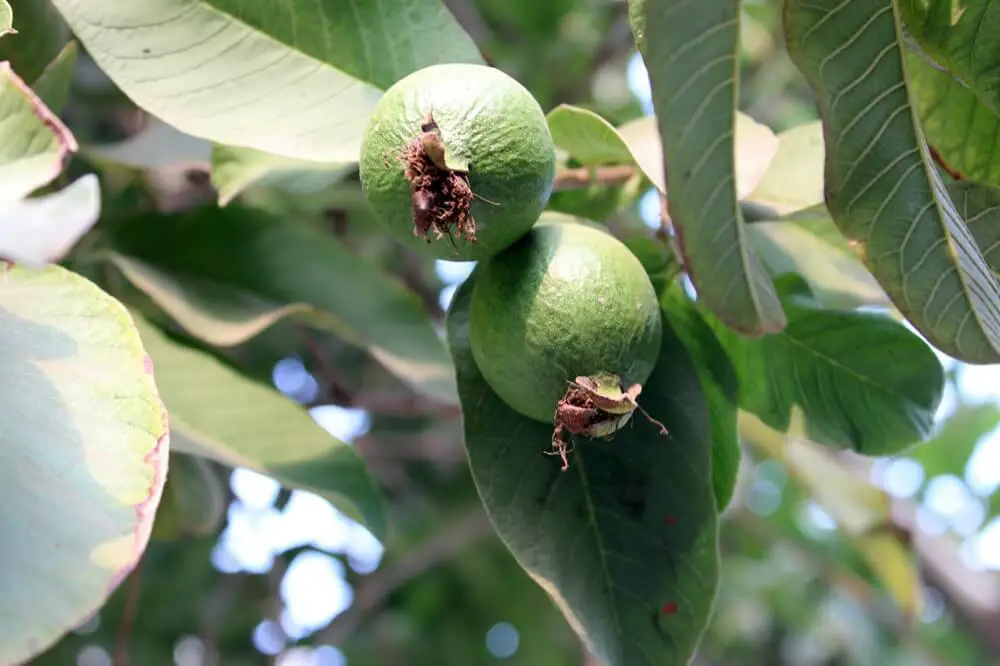
Guava trees are fast growers and can start bearing fruit within 2–4 years. They are adaptable and can thrive in various soil types.
Growing Tips:
- Climate: Suitable for USDA zones 9–11. In cooler areas, grow guava in containers to bring indoors during frost.
- Soil: Tolerates a range of soils but prefers well-draining soil with a pH between 5 and 7.
- Sunlight: Needs full sun for best fruit production.
- Watering: Keep the soil consistently moist, especially during flowering and fruiting periods.
- Pruning: Regular pruning helps maintain size and encourages branching, leading to more fruit.
Lemon
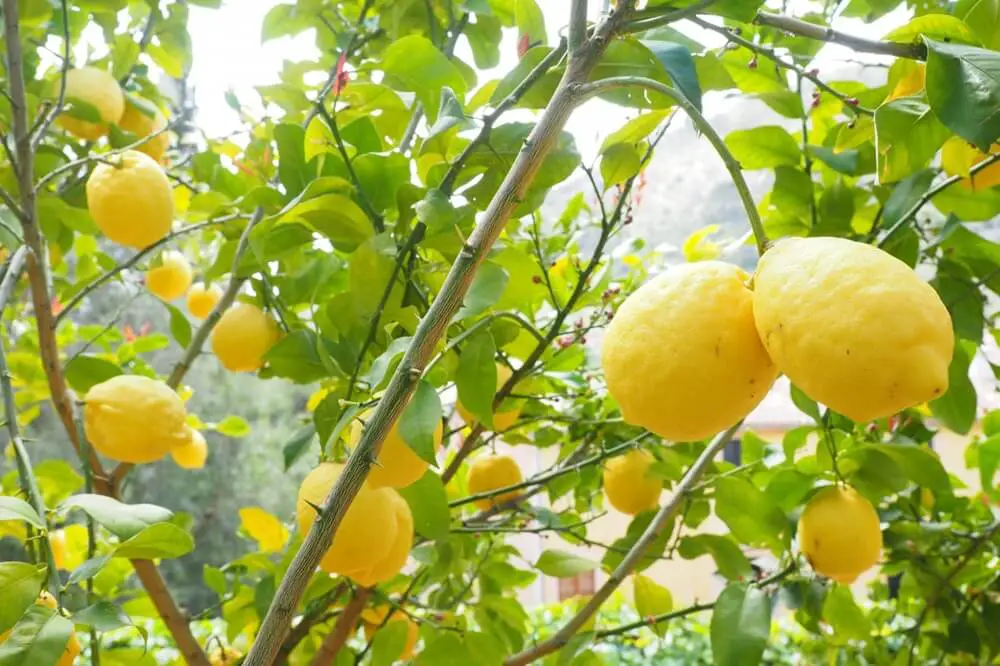
Lemon may seem like a pipe dream to many of us that don’t live in a tropical climate, but there are many varieties of citrus trees that do extremely well indoors and in pots. This opens up quite a few possibilities for those of us that have greenhouses and other indoor growing spaces.
Growing Tips:
- Climate: Ideal for USDA zones 9–11 or indoors with good light.
- Soil: Slightly acidic, well-draining soil.
- Sunlight: 8–12 hours of sunlight daily—use grow lights if needed indoors.
- Watering: Keep soil moist but not soggy. Let the top inch dry out between waterings.
- Fertilization: Monthly feeding with citrus-specific fertilizer.
Loquat
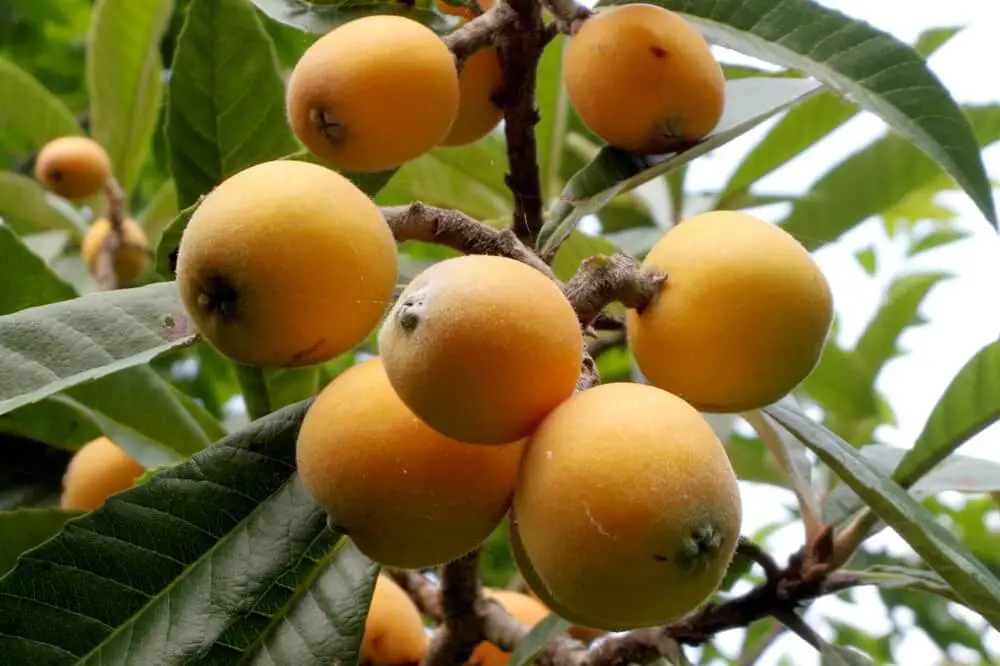
Loquat trees are evergreen and can produce fruit in as little as 1–2 years under optimal conditions. They are also ornamental, adding beauty to gardens.
Growing Tips:
- Climate: Thrives in USDA zones 8–10. Protect from frost in cooler climates.
- Soil: Prefers well-draining soil rich in organic matter.
- Sunlight: Full sun to partial shade is ideal.
- Watering: Regular watering is essential, especially during dry spells.
- Fertilization: Apply a balanced fertilizer in spring to support growth and fruiting.
Mango
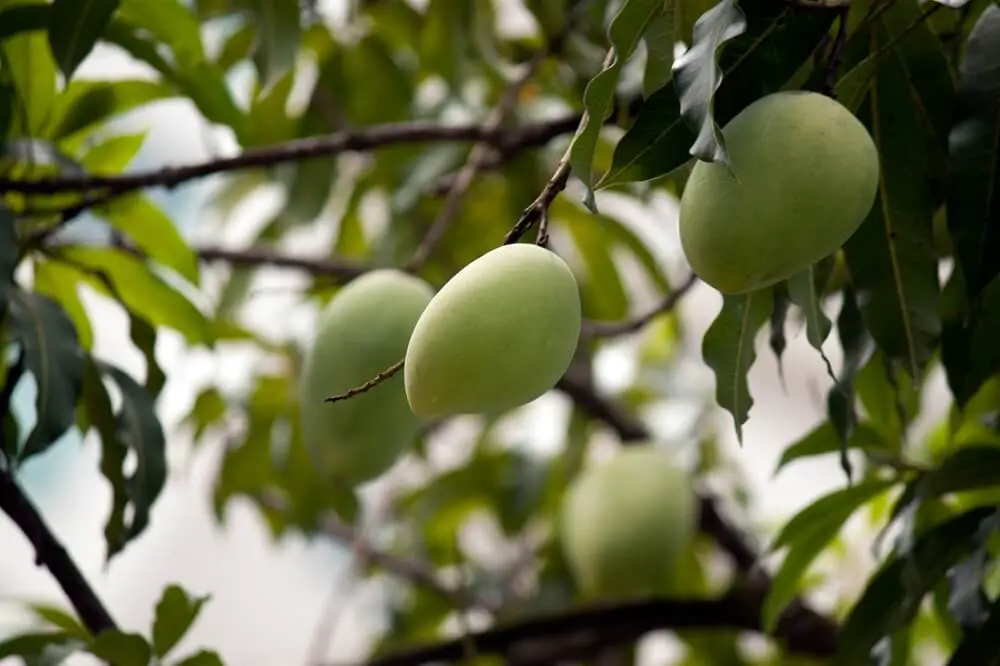
Mango trees are renowned for their rapid growth and early fruiting, especially in tropical and subtropical climates. Certain varieties, like the ‘Glenn' mango, can begin producing fruit within 1–2 years of planting.
Growing Tips:
- Climate: Ideal for USDA zones 9–11. In cooler regions, consider container planting to move indoors during colder months.
- Soil: Prefers well-draining, sandy loam soils. Ensure the planting site has good drainage to prevent root rot.
- Sunlight: Requires full sun exposure for optimal growth and fruit production.
- Watering: Water deeply but infrequently to encourage deep root growth. Reduce watering once the tree is established.
- Fertilization: Use a balanced fertilizer during the growing season to support healthy growth and fruiting.
Mulberries
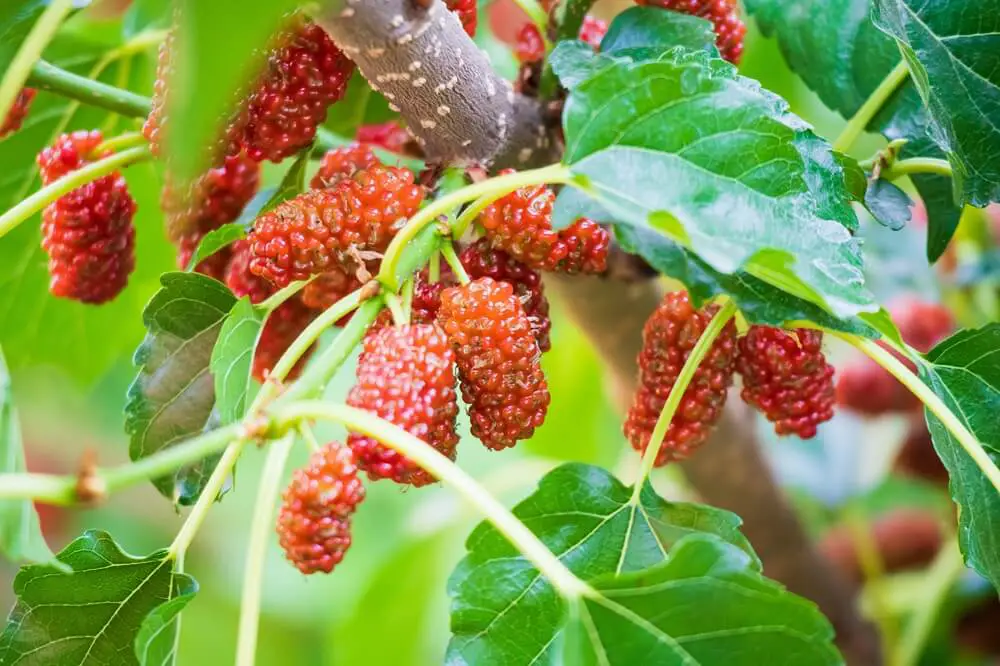
Mulberries are also an extremely popular choice for those that want fruit in a timely manner. Mulberry trees will produce within one year if you are using a grafted tree, and they can grow up to 2.5 feet each year! In case you can't eat all that a mulberry tree can produce, birds like chickens, ducks, and turkeys love to eat mulberries.
Growing Tips:
- Climate: Grows well in USDA zones 4–9.
- Soil: Tolerates poor soil but thrives in well-draining loam.
- Sunlight: Needs full sun for best fruit production.
- Watering: Regular watering, especially during dry seasons.
- Pruning: Prune in winter to maintain shape and encourage fruiting branches.
Nectarines
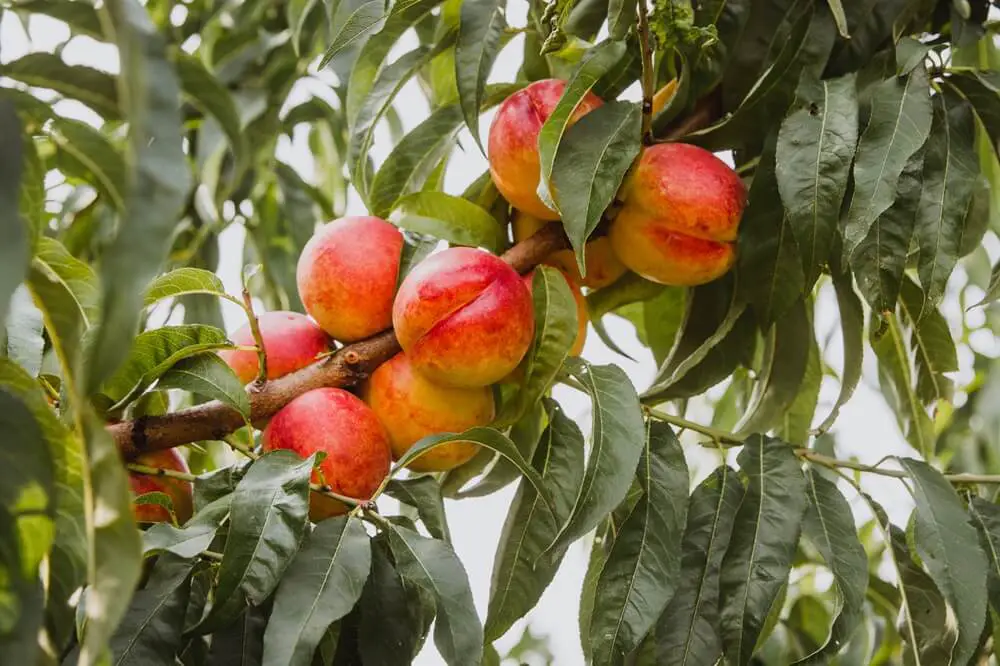
If you live in a warm enough climate, grafted nectarine trees can produce fruit in under three years when well taken care of. They need well-drained soil, so make sure you put them in an area where soggy roots won’t be an issue.
Nectarine trees aren't self-pollinating, which means you will need two trees in order to produce fruit. Get two different varieties of trees that bloom at the same time so there will be cross-pollination.
Growing Tips:
- Climate: Best in USDA zones 6–9.
- Soil: Requires well-draining soil; avoid heavy clay.
- Sunlight: Full sun (at least 6 hours a day).
- Watering: Regular, deep watering—especially when fruit is developing.
- Pollination: Not all are self-pollinating—plant compatible varieties for cross-pollination.
Oranges

Oranges are a surprisingly fast-growing citrus option, especially when you use grafted dwarf varieties. While seed-grown trees can take up to 10 years, grafted orange trees can start producing fruit in as little as 2–3 years when well cared for.
They’re also ideal for container gardening, which is great if you want to bring them indoors during colder months. With the right environment and regular care, you can enjoy fresh, sweet oranges from your backyard—or even your balcony!
Growing Tips:
- Climate: Best for USDA zones 9–11. Can be grown in containers in cooler zones.
- Soil: Well-drained, slightly acidic soil is ideal.
- Sunlight: Needs full sun—8 hours or more per day.
- Watering: Water deeply but infrequently; let the top few inches of soil dry out between waterings.
- Fertilization: Use a high-nitrogen citrus fertilizer during the growing season for strong fruit production.
- Pruning: Minimal pruning needed—just remove dead or overcrowded branches to maintain airflow.
Papayas
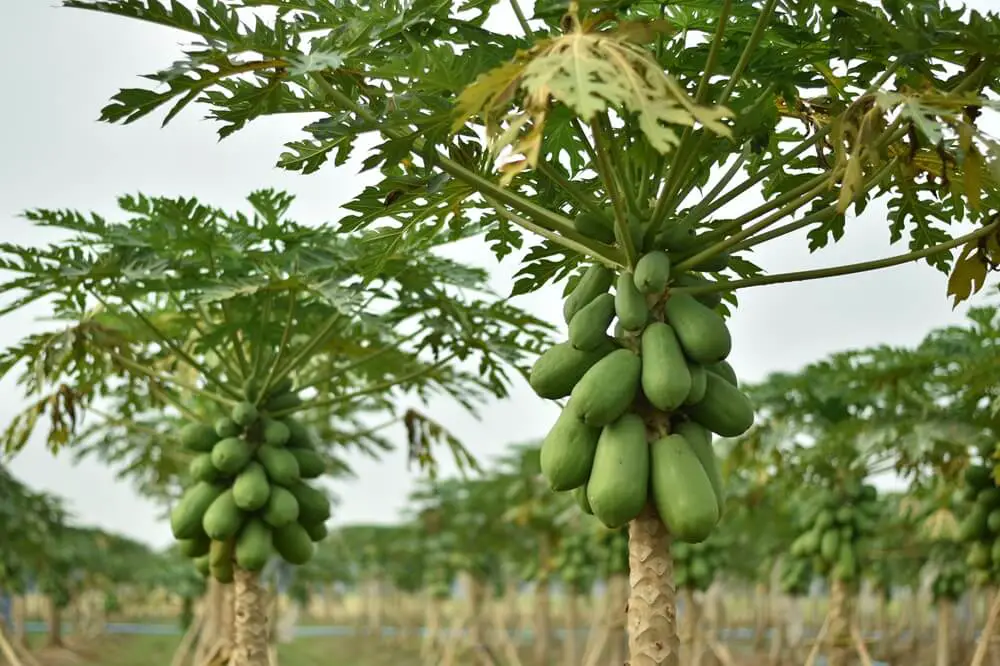
Papaya trees can begin producing fruits in as little as one year, which makes them one of the fastest-growing options when it comes to fruit trees. The only downside is that they need warmth throughout the entire year as they cannot tolerate frost, but there are variations that can be grown in a greenhouse or container garden if you live in a colder climate.
Growing Tips:
- Climate: USDA zones 9–11. Protect from frost or grow in greenhouses in cooler zones.
- Soil: Needs light, well-drained soil rich in organic matter.
- Sunlight: Full sun is essential.
- Watering: Keep soil moist, but avoid waterlogging.
- Fertilization: Feed bi-weekly with a balanced fertilizer, especially during growth spurts.
Peaches
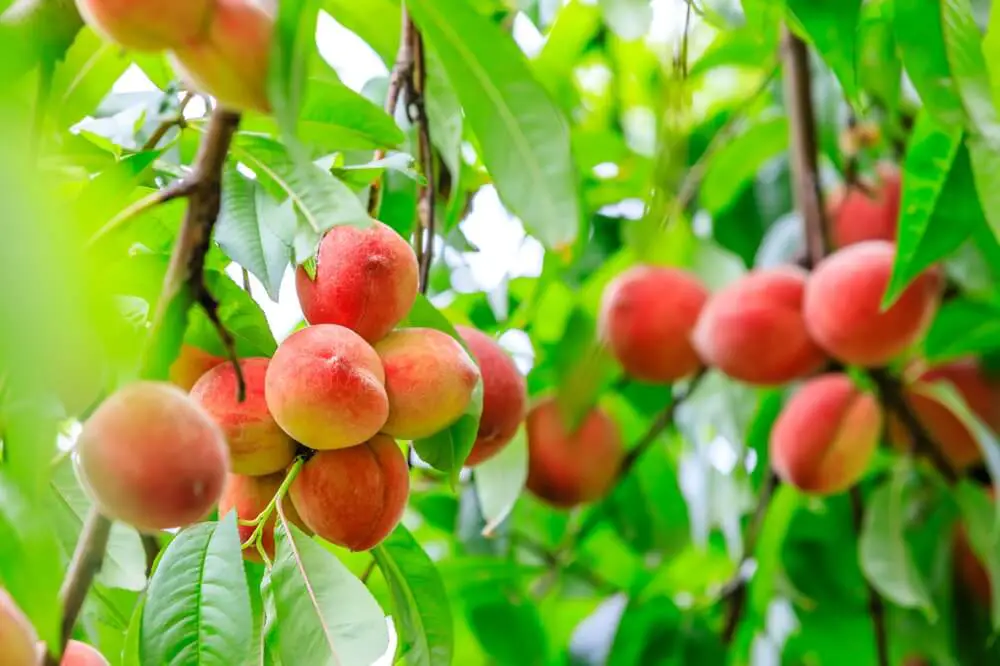
When properly cared for, peach trees can begin producing fruit in as little as 3 years. Just take note that they require consistent warm weather throughout the year and will not do well in areas with cold temperatures. Peach trees are most ideal to grow under full sunlight in 4-9 USDA zones, using slightly acidic, and well-drained soil that isn’t too soggy.
Growing Tips:
- Climate: Ideal in USDA zones 4–9.
- Soil: Slightly acidic, well-drained soil is best.
- Sunlight: Needs full sun—at least 6–8 hours per day.
- Watering: Deep, consistent watering during growing season.
- Pruning: Prune annually to encourage new fruiting wood and open canopy.
Pears
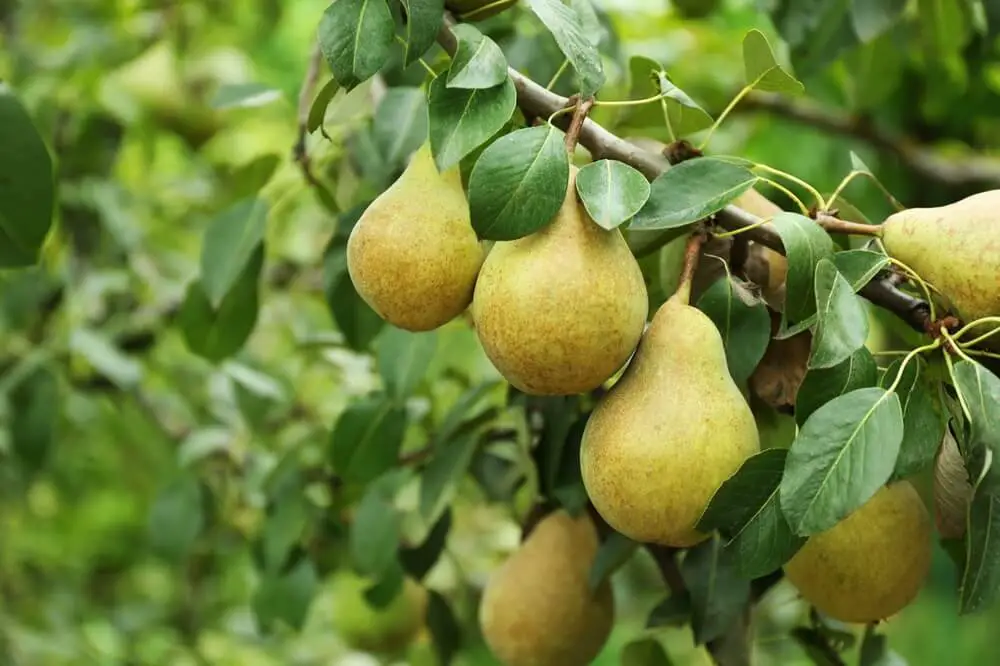
Pear trees can begin producing fruit in as little as 3 years under the right conditions. Pears can be grown in 3-10 USDA zones, which makes them slightly hardier than peach trees as well.
They do require full sunlight with little to no shade, but they can still withstand cold temperatures fairly well above 29 degrees Fahrenheit. Take note as well that pear trees can grow to be over 20 feet tall, so make sure you have plenty of space for them.
Growing Tips:
- Climate: Great for USDA zones 3–10.
- Soil: Prefers slightly acidic, well-drained loamy soil.
- Sunlight: Requires full sun.
- Watering: Water deeply every 7–10 days, especially during fruiting.
- Pollination: Most varieties require a second tree for pollination—check your variety.
Final Thoughts
The key to quickly producing fruit trees is to make sure the tree is well cared for. Plant it in the correct soil, with the correct sunlight, and choose varieties that will do well in your climate zone. That, and using well-grafted rootstock will have you eating fresh fruit from your own garden in no time!
You May Also Like:
The post 14 Fastest Growing Fruit Trees appeared first on Homestead Survival Site.
from Homestead Survival Site https://ift.tt/Bx8ERPn
No comments:
Post a Comment